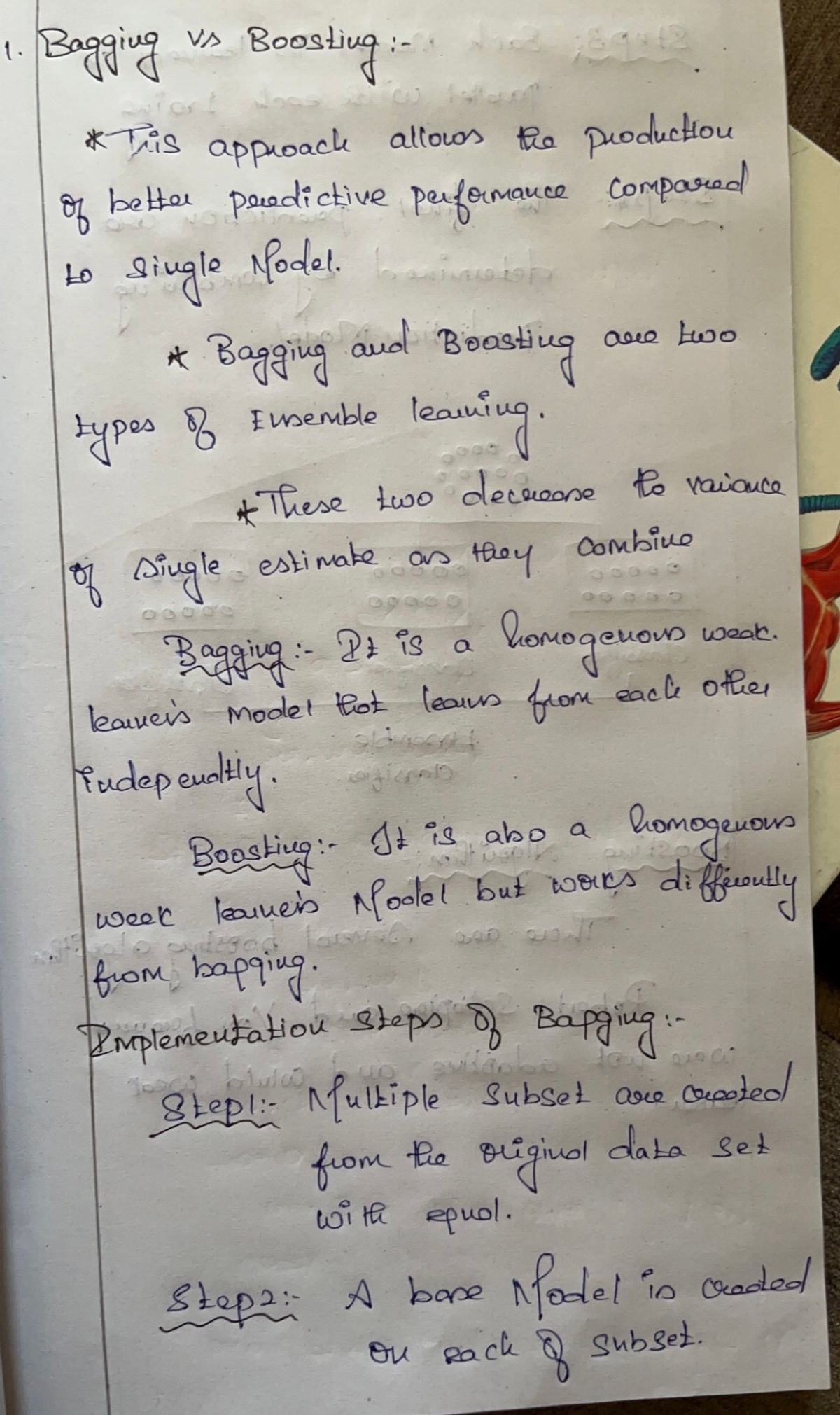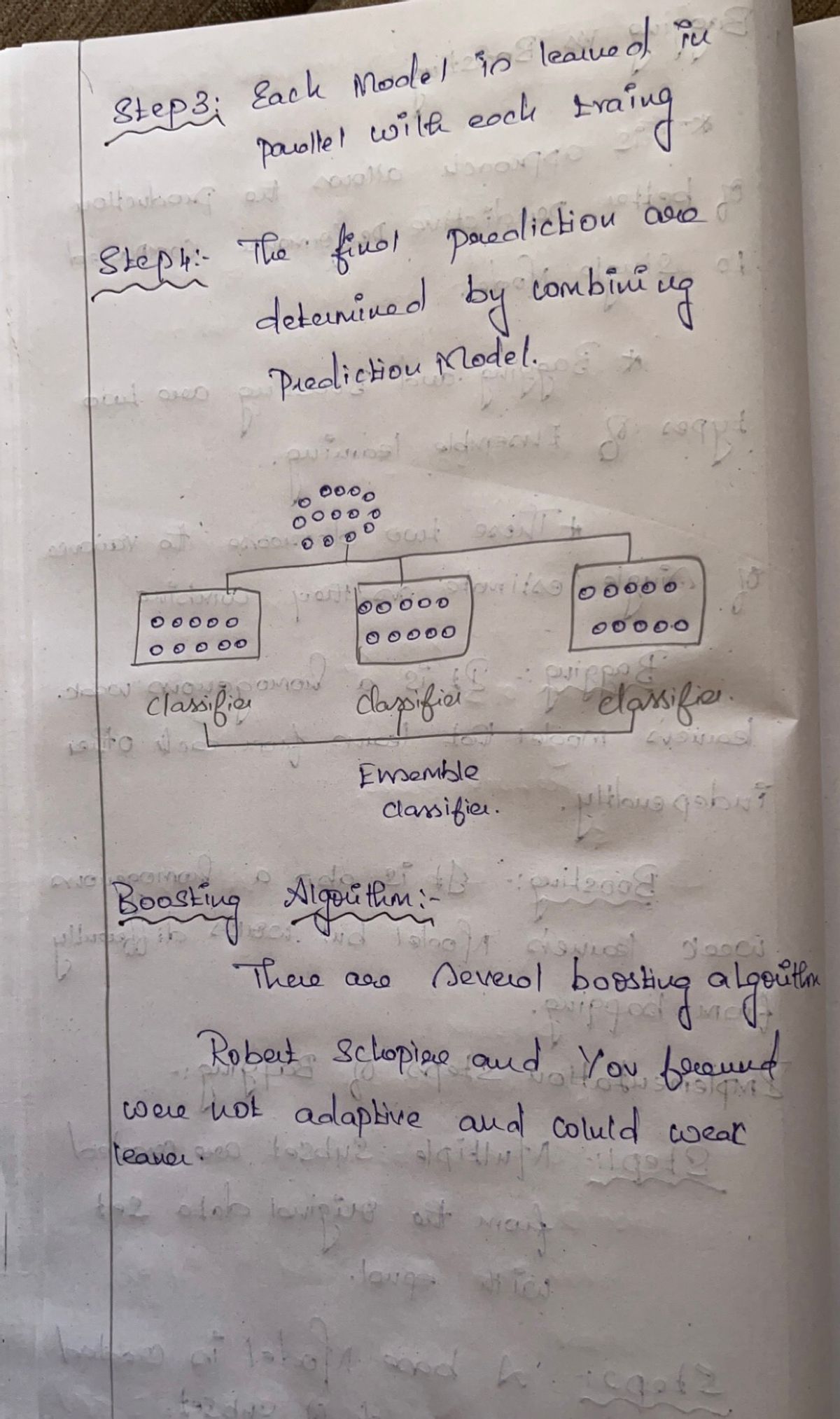Bagging and Boosting
Computer Networking: A Top-Down Approach (7th Edition)
7th Edition
ISBN:9780133594140
Author:James Kurose, Keith Ross
Publisher:James Kurose, Keith Ross
Chapter1: Computer Networks And The Internet
Section: Chapter Questions
Problem R1RQ: What is the difference between a host and an end system? List several different types of end...
Related questions
Question

Transcribed Image Text:**Q6 (18 pts): Bagging and Boosting**
Bagging is generally used to help stabilize classifiers with unstable learning algorithms (optimal score searching algorithms). A classifier has a stable learning algorithm if, by changing the training data, the predicted class labels in the test data don’t change. For instance, the predictions of a decision tree might significantly change with a small change in the training data. This definition depends on the amount of data, of course. Classifiers that are unstable with \(10^3\) training examples may be stable with \(10^9\) examples. Bagging works by aggregating the answers of unstable classifiers trained over multiple training datasets. These multiple datasets are often not independent, generally sampled with replacement from the same training data.
Boosting works by converting weak classifier (very simple models) to strong ones (models that can describe complex relationships between the inputs and the class labels). A weak learner is a classifier whose output of an test example attributes \(x_i\) is only slightly correlated with its true class \(t_i\). That is, the weak learner classifies the data better than random, but not much better than random. In boosting, weak learners are trained sequentially in a way that the current learner gives more emphasis to the examples that past learns made mistakes on.
1. **(8 pts)** Suppose we decide to use a large deep feedforward network as a classifier with a small training dataset. Assume the network can perfectly fit the training data but we want to make sure it is accurate in our test data (without having access to the test data). Would you use boosting or bagging to help improve the classification accuracy? Describe what would be the problem of using the other approach.
Expert Solution
Step 1


Step by step
Solved in 2 steps with 3 images

Recommended textbooks for you

Computer Networking: A Top-Down Approach (7th Edi…
Computer Engineering
ISBN:
9780133594140
Author:
James Kurose, Keith Ross
Publisher:
PEARSON

Computer Organization and Design MIPS Edition, Fi…
Computer Engineering
ISBN:
9780124077263
Author:
David A. Patterson, John L. Hennessy
Publisher:
Elsevier Science

Network+ Guide to Networks (MindTap Course List)
Computer Engineering
ISBN:
9781337569330
Author:
Jill West, Tamara Dean, Jean Andrews
Publisher:
Cengage Learning

Computer Networking: A Top-Down Approach (7th Edi…
Computer Engineering
ISBN:
9780133594140
Author:
James Kurose, Keith Ross
Publisher:
PEARSON

Computer Organization and Design MIPS Edition, Fi…
Computer Engineering
ISBN:
9780124077263
Author:
David A. Patterson, John L. Hennessy
Publisher:
Elsevier Science

Network+ Guide to Networks (MindTap Course List)
Computer Engineering
ISBN:
9781337569330
Author:
Jill West, Tamara Dean, Jean Andrews
Publisher:
Cengage Learning

Concepts of Database Management
Computer Engineering
ISBN:
9781337093422
Author:
Joy L. Starks, Philip J. Pratt, Mary Z. Last
Publisher:
Cengage Learning

Prelude to Programming
Computer Engineering
ISBN:
9780133750423
Author:
VENIT, Stewart
Publisher:
Pearson Education

Sc Business Data Communications and Networking, T…
Computer Engineering
ISBN:
9781119368830
Author:
FITZGERALD
Publisher:
WILEY